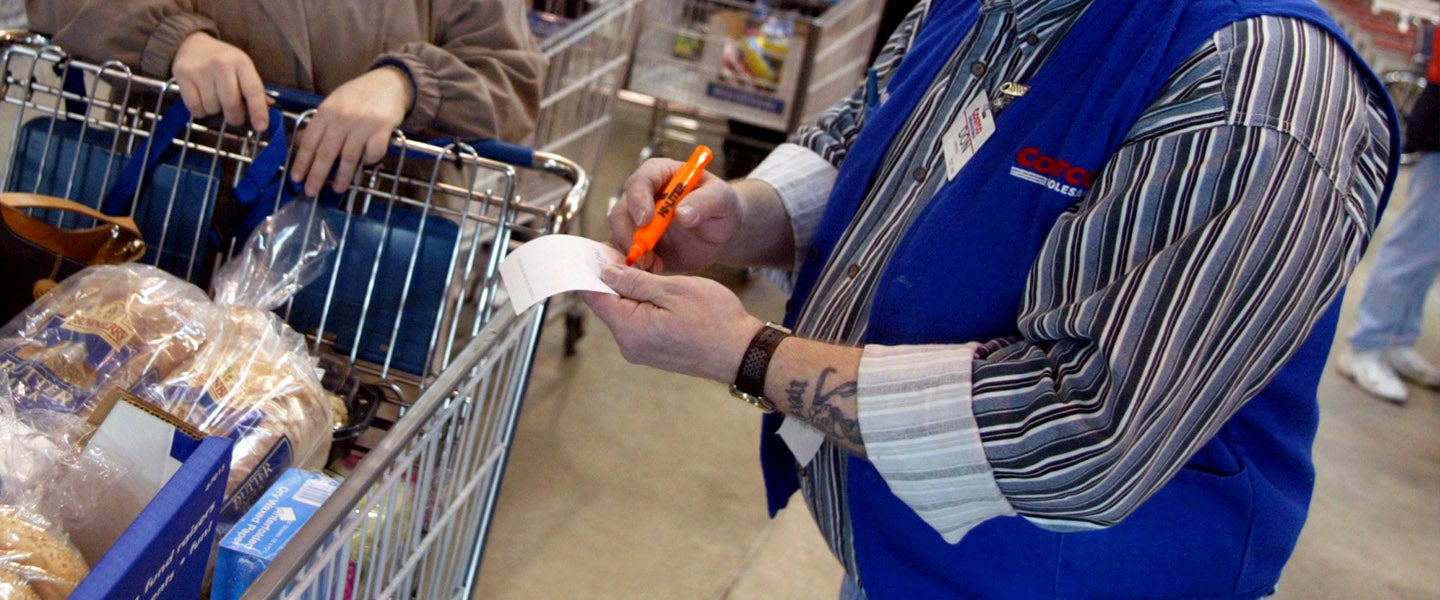A trip to Walmart is like a quest in a video game, and the receipt checker is the final boss you must defeat. As you make your way toward the exit, you notice that you and your mom’s chatty friend Linda’s paths are about to intersect. You want to make a run for it, but Mr. Receipt Man is ready to rumble. What would happen if you just ignored him?
Technically, it’s your right to refuse to have your receipt checked. But it’s also within Walmart’s rights to at least attempt to verify your receipt.
Fairly obviously, big-box stores like Walmart and BestBuy check receipts in order to prevent shoplifting. At a minimum, it’s an aspect of their security theater intended to at least give the illusion that shoplifters will be caught. Most often, receipt checkers stand at the exits and go through everyone’s receipt, and customers willingly participate out of a sense of obligation.
If you attempt to surpass this process and are stopped, you’re legally allowed to refuse. Of course, refusing will probably make you look suspicious, and depending on your state’s laws on shoplifting, this could potentially be interpreted as probable cause for a search of your shopping bags and receipt. This, however, can present trouble for stores if your refusal to show a receipt is their only source of probable cause.
“Shopkeepers Privilege,” wherein employees are allowed to detain customers who are thought to have shoplifted until police arrive, is applicable in most states. But without probable cause, stores can get slapped with a false imprisonment or false arrest lawsuit. These charges can be far more costly than the value of stolen merchandise for shopkeepers. To avoid this, many stores follow a series of rules to establish probable cause that shoplifting has occurred. Per LegalMatch.com and CrimeDoctor.com, these rules are summarized as:
- You must see the shoplifter approach your merchandise.
- You must see the shoplifter select your merchandise.
- You must see the shoplifter conceal, carry away or convert your merchandise.
- You must maintain continuous observation of the shoplifter.
- You must see the shoplifter fail to pay for the merchandise.
- You must approach the shoplifter outside of the store.
All of these steps essentially serve to prove that someone intentionally stole something. Checking a receipt inside the store is one final attempt to prevent that theft from happening: If the receipt-checker does find something you haven’t paid for, you can play stupid and say you forgot about it, missed it during checkout, what have you. You won’t get to keep your grubby little hands on the product, but that’s a fair trade for not getting arrested.
But in the event you actually paid for all your shit, you might be able to make a fuss if you’re detained for a search. People have attempted to bring forth lawsuits against retailers like Walmart for such situations, citing defamation and emotional distress in addition to false imprisonment, though none have publicly been successful. People who have been singled out amongst other customers to show their receipt have also made claims of discrimination.
The one big exception to all this is warehouse stores requiring a membership. When you become a member of Costco, for example, you sign an agreement. One of the stipulations of this agreement is that employees can inspect your cart and receipt as you leave the store. In other words, you signed away your ability to complain about that one.
Besides, in most stores, it’s easier to just show your receipt when asked. Like I said, you’re allowed to refuse, even if the anti-theft alarm goes off, but keep in mind that Walmart employs an entire team of people dedicated to watching your movements within the store, and presumably a team of extremely well-paid lawyers capable of grinding your little false imprisonment case to a pulp.

